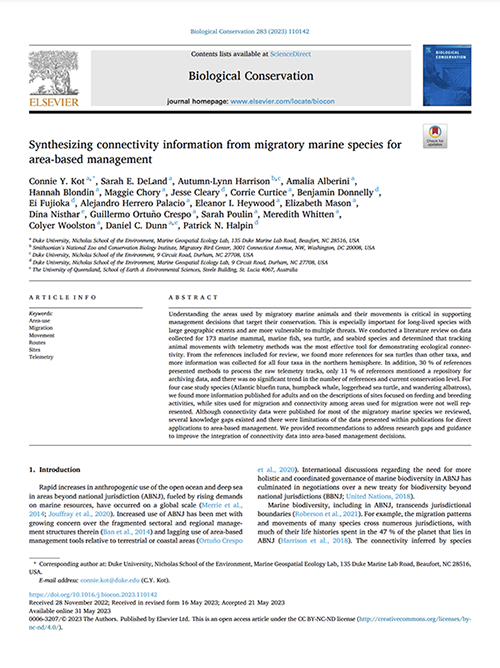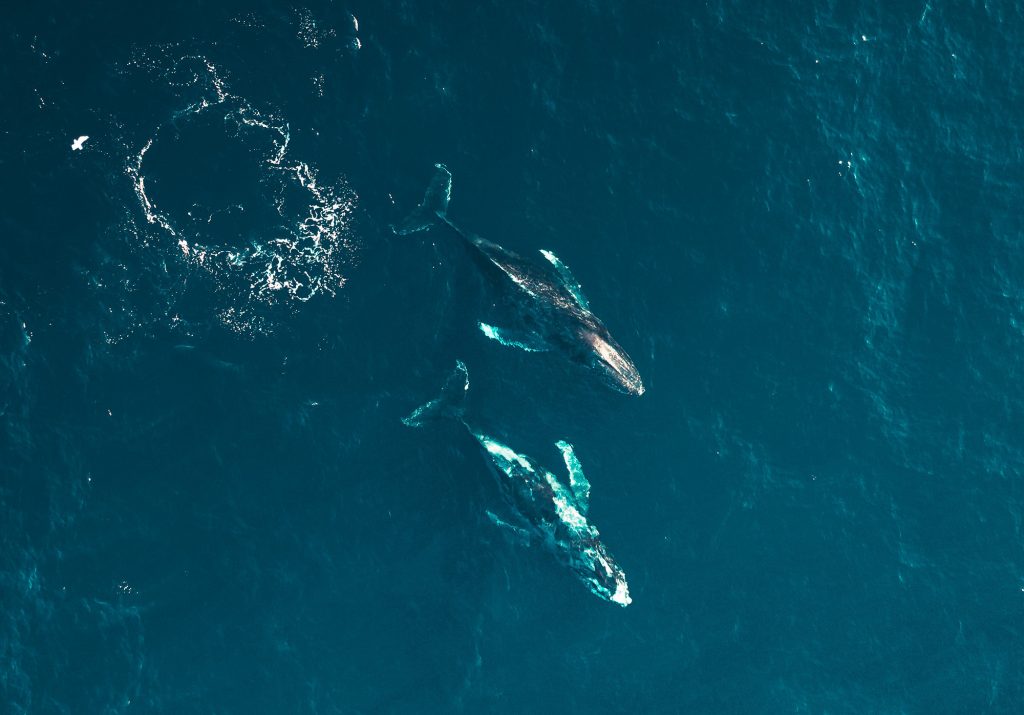Connectivity is an essential component that contributes to how ecosystems function. Numerous studies have shown that species that depend on different areas for feeding, breeding, and development also rely on how these spaces are connected. A comprehensive assessment of how these individual studies described global marine connectivity is a first step in learning how to improve the uptake of connectivity data in marine policy and area-based management decisions.
A recently published study – led by Duke University’s Marine Geospatial Ecology Lab (MGEL) as part of its work under GOBI’s grant from the International Climate Initiative – reviewed more than 25 years of information published on tracking migratory species to synthesise marine connectivity, globally. Through this synthesis, biases and gaps in the data were exposed as well as recommendations for future presentations of research and management applications. The review process started with a list of 173 marine fish, marine mammal, sea turtle, and seabird species known to have extensive movements that connect different regions and habitats. A major knowledge gap was discovered due to the lack of marine connectivity or tracking information for 67 of the selected marine fish marine mammal, and seabird species. However, telemetry data were available on marine connectivity within a total of 981 references, selected from the literature review, to describe research on the movements of a subset of 106 marine species.

The review found a significant increase in the number of publications with marine connectivity data for marine species since 1990. The summary of extracted information showed that the sea turtle taxa had the greatest number of available references compared to marine fish, marine mammals, and seabirds. Additionally, most data were biased towards the Northern Hemisphere, with references on marine connectivity available for all four taxa, and the greatest number of studies occurring within the north Atlantic and Pacific Oceans. From the full collection, 223 references were compiled to evaluate the information on four case study species: Atlantic bluefin tuna, humpback whale, loggerhead sea turtle, and wandering albatross. The common trend for the case study species was that data gaps existed by sex and age-class and more movement data were available during feeding and breeding when compared to migrating.
Published telemetry data were often processed using filtering or modelling methods to estimate home ranges; these results were presented in ways that have informed area-based management. Marine connectivity data could more easily be utilised for future management applications if steps were also taken to standardise, archive, and share information within a known database repository, though most of the references that were reviewed did not mention standard practices for these steps. Connectivity research could reach a broader audience and be more easily integrated in management applications when results are communicated beyond the scientific literature. Collaborating within networks with common priorities, increasing partnerships among scientists and policymakers, and providing more opportunities for access and engagement from all stakeholders were all recommendations for expanding the impact of marine connectivity research.

The data summarised in this paper form the foundation of the Migratory Connectivity in the Ocean (MiCO) system – an online visualisation platform that aggregates and generates actionable knowledge to support worldwide conservation efforts for numerous migratory species and the oceans on which they depend. MiCO has now released more than 100 new models describing connectivity generated by migratory marine megavertebrates. These models represent the largest repository of synthesised knowledge of marine migratory connectivity in the world, and GOBI is proud to be a primary supporter of this work.

Read the full article: Kot CY, DeLand SE, Harrison A-L, Alberini A, Blondin H, Chory M, Cleary J, Curtice C, Donnelly B, Fujioka E, Herrero Palacio A, Heywood EI, Mason E, Nisthar D, Ortuño Crespo G, Poulin S, Whitten M, Woolston C, Dunn DC, Halpin PN (2023) Synthesizing connectivity information from migratory marine species for area-based management. Biological Conservation. DOI 10.1016/j.biocon.2023.110142



